The Greek island of Kastellorizo (spelt in various different ways and also known as Megisti and Meis) is a geopolitical oddity, a tiny outpost of the West, 75 miles east of Rhodes but only two miles off the coast of Turkey, due south from the port of Kaş, where I spent a night recently. I had photographed Kastellorizo from my hotel room’s balcony, imagining the imposing cliffs dripping with snowdrops.

When I was planning the snowdropathon, I decided to visit Kastellorizo to see this population for myself, neglecting to study a map or to think very carefully about the proximity of the island to Turkey. Thus it was that, having come within a 30 minute boat ride of Kastellorizo while last in Turkey, I returned to London, waited a few days and took three more flights, first to Athens, then to Rhodes and finally back to Kastellorizo, arriving on a sunny day at the short airstrip, which runs almost the entire width of the island, near its highest peak. Kaş was clearly visible from the airport and I could pick out the spot where I’d stayed there without needing even to lift my binoculars to my eyes. That will teach me to look at a map in advance, the next time I plan a travel marathon.
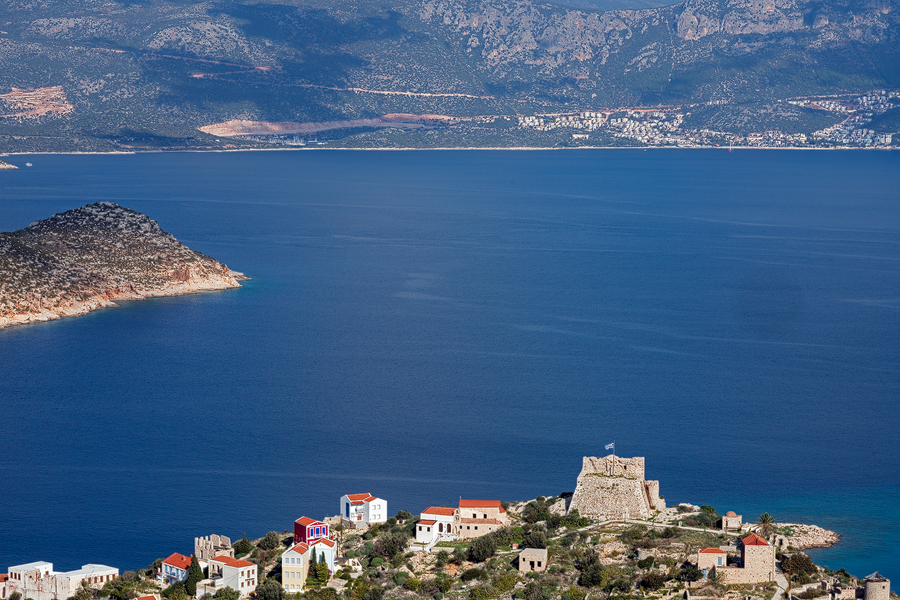
My little apartment was in a building with a stuccoed neoclassical façade, painted chalky cobalt blue, with the doorways and window frames picked out in white. It was 50m from the harbour front, from whence enticing scents of grilling wafted, and my first thought was naturally of lunch. Wandering down to the quay, I selected at random one of several tavernas, sat down at a table set right beside the pellucid sea and opened my book, Birds Without Wings, Louis de Bernières’ novel of nationalism and religious intolerance, set in the fictional Anatolian town of Eskibahçe. It chronicles the travails of its Turkish and Greek, Christian and Muslim inhabitants, around the time Turkey was emerging as a nation. With its lightly fictionalised tales of mass slaughter, vast migrations of refugees and hatreds whipped up by cynical political and religious leaders between ordinary people who could otherwise have been friends, it made apposite reading.
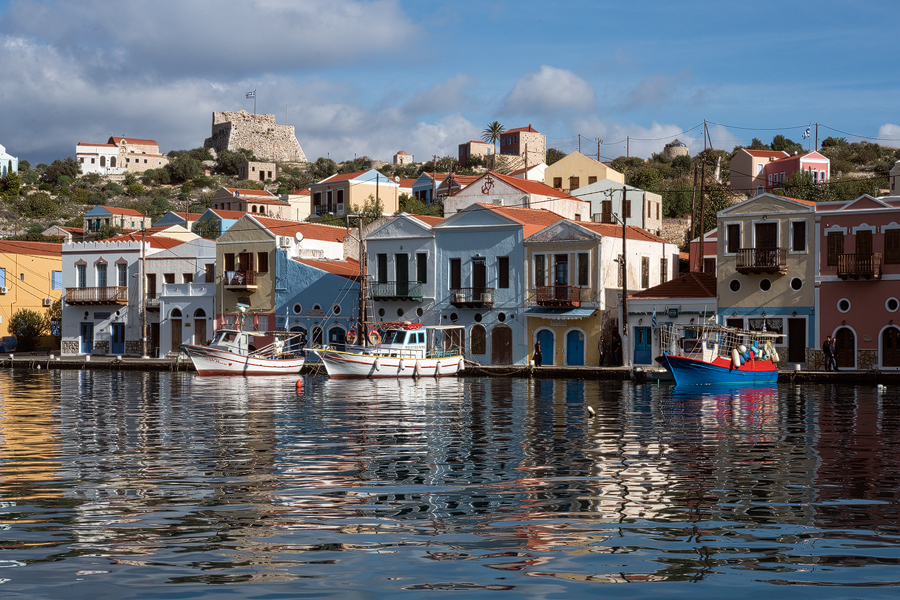
The proprietor soon bustled over and skilfully negotiated me into ordering a whole bream, with a big Greek salad. No skill was required to extract an order for white wine, which came in a half litre pewter tankard, brimming over. As I sat and ate, surrounded by patient cats waiting for scraps, I noticed a large Loggerhead Turtle, circling lazily in the harbour, doing rounds of the quayside restaurants. Like the cats, it had evidently learned that this was a good place to find lunch.
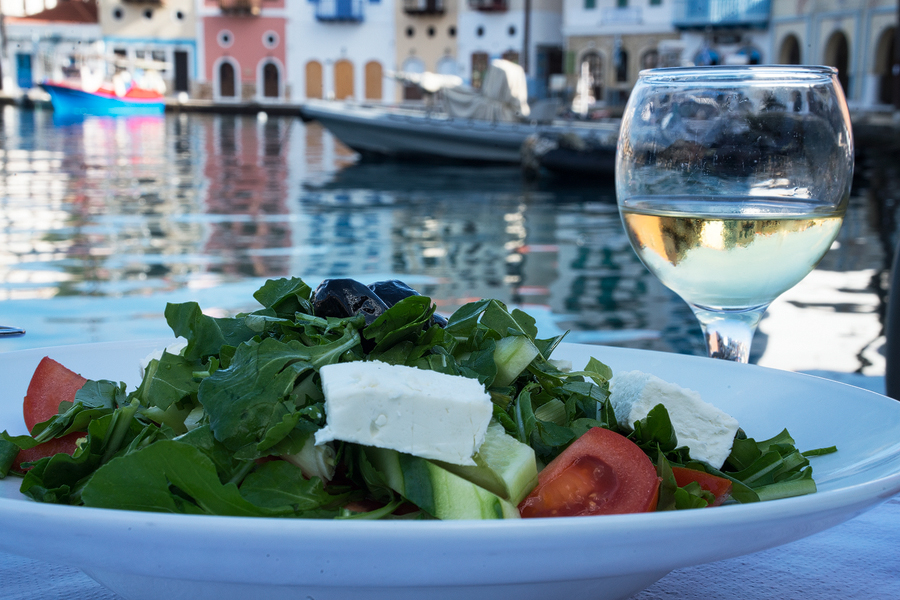
With three full days stretching ahead of me, on an island where everywhere is walking distance away, I was relaxed about finding the plants I had come to see, so I succumbed to the urge to sleep and awoke, thoroughly refreshed, to a dark sky and a chilly breeze blowing through the open shutters. It must, I thought, be supper time. Life, in my recent experience, is just one damned delicious meal after another.
Returning to the same restaurant, I’d like to say that the proprietor greeted me like a brother. But, in truth, there was something slightly strained in his welcoming ‘kalimera!’, usually offered with such sincerity everywhere in Greece. As I ate octopus and bread and drank red wine, the proprietor and a group of friends consumed beer and ouzo and talked loudly in that basso profondo voice that only Greeks and certain opera singers seem capable of achieving. At an adjacent table sat a group of slim young men, dressed, like athletes, in track suits, ordering bottles of ouzo and wine. One of the Greeks, himself full of beer and bravado, turned towards them and spoke, slightly aggressively.
‘Where are you from?’
‘Syria.’
‘Let me ask, is it forbidden to drink alcohol in Syria?’
‘No problem.’
The young men continued drinking. Over the next few days I saw them whenever I was in the harbour, unsmiling, drinking coffee in the mornings and ouzo in the evenings, talking on mobile phones, and presumably organising the next profitable shipment of refugees from the Turkish mainland. I ate again at the same restaurant twice and, on both occasions, groups of newly arrived Syrian refugees came to eat, sitting down at a table and ordering a meal, as though they’d just stepped off a train in Berlin (which, of course, they probably will in due course).
‘What do you think of all this?’ I asked the proprietor on my last night on Kastellorizo, breaking a personal rule never to initiate a conversation.
‘I don’t care!’ he replied testily. ‘I’m not a policeman or a politician. If they help me out of season, that is good. Anyway, they are poor people.’
‘They don’t look particularly poor to me.’ I said uncharitably, having noticed the quantities of food and booze ordered and paid for and the way in which the plump children among the refugees gave most of their food to the cats.
‘You’re right,’ said the proprietor, ‘they have plenty of money. But what is happening in their county is very bad and I pity them.’
No arguments there. At another table sat two other British people. Eventually one of them approached a table of refugees and tried to make conversation.
‘We are here to look after refugees,’ she said. ‘Welcome. You must have had a very difficult journey. Do you need help finding somewhere to sleep?’
‘No, thank you. My friend has already organised it,’ replied the man, waiting politely for the self-appointed rescue committee to run out of platitudes and go back to her red wine, before tucking into his chicken and chips.
In the morning the sun shone out of a clear blue sky and I set out eagerly to explore the limestone cliffs that loomed behind the town.
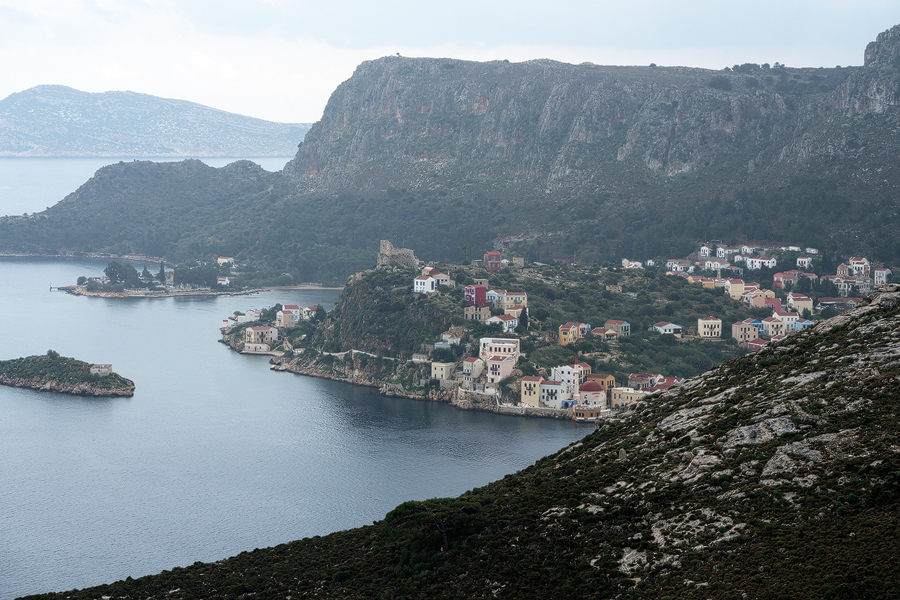
In one of the shops by the quay I bought water and nuts. As our political masters triumphantly hailed the climate change agreement reached in Paris, I marvelled at the remarkable world we have created. It is possible to bottle a litre of water in plastic, in a factory somewhere on the Greek mainland, send it on a ship to Rhodes, transfer it to a smaller ship, bound for Kastellorizo, put it in a refrigerator, keep it at ten degrees below ambient for weeks on end then sell it, at a profit, for one Euro. Good luck with that one and a half degrees, chaps.
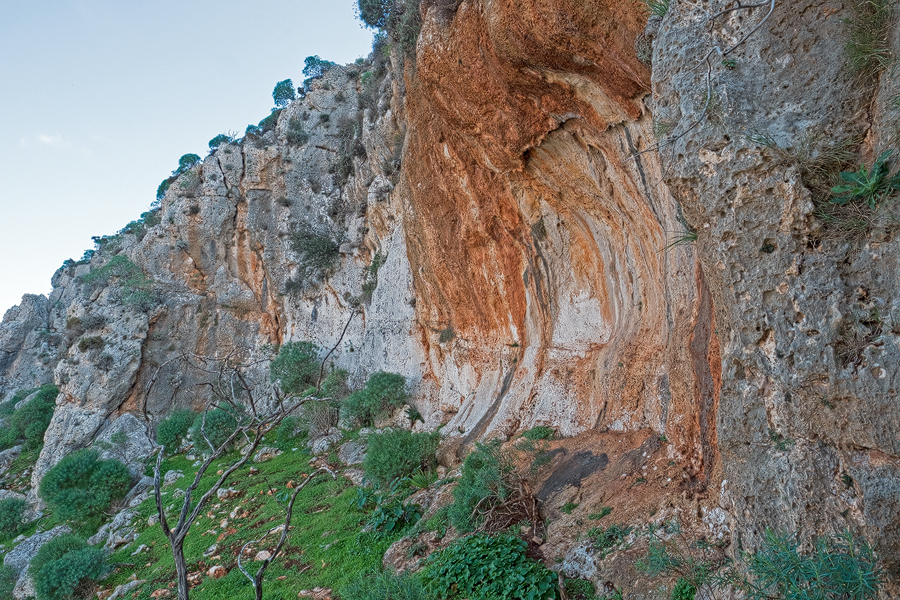
A steep set of steps cuts up through a gap in the cliffs behind Kastellorizo town, to the limestone plateau of the interior. According to my small but excellent guidebook, various interesting churches, Lycian tombs and the ancient capital of this once thriving, wine-growing and trading centre can be explored but I fear I never made it beyond the top of the steps, so fascinating was the botany on those steep slopes at the bases of the iron-rich, red-stained crags.
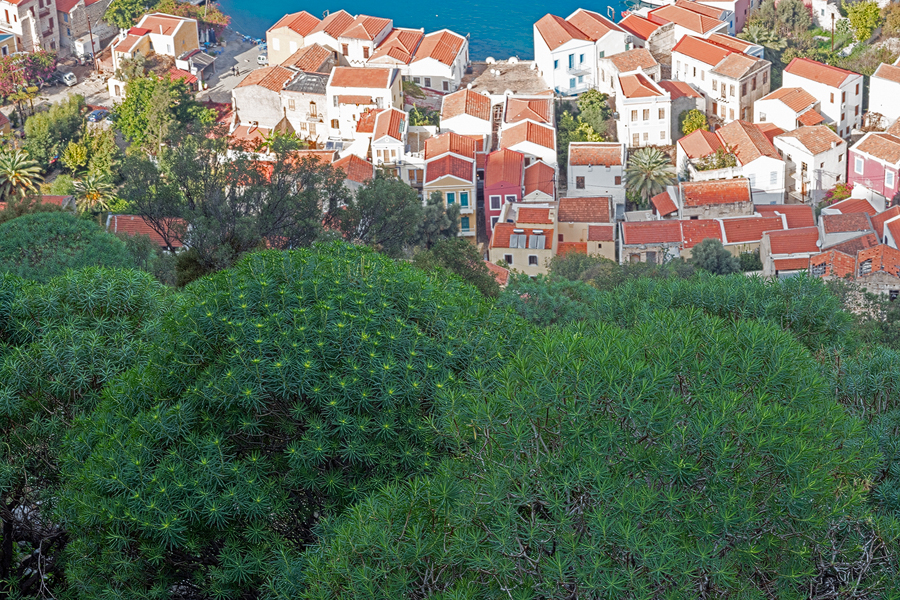
A handful of plants, which one would typically expect to flower in spring, were flowering instead in the mild Anatolian autumn. As well as the snowdrops I had come specifically to see, there was Narcissus tazetta, with small flowers but an intoxicatingly wonderful scent. It grew prolifically in an olive grove, which was enclosed in a tall fence of barbed wire and from which goats were thereby excluded, but it was rare everywhere else. Much commoner, especially in the disturbed soil beside roads above the town, was Anemone coronaria, emerging dark violet, then fading to pale, almost Meconopsis blue or, in a few cases, pink. Huge, shapely, open-branching shrubs of Euphorbia dendroides, its lanceolate leaves resembling those of French Tarragon, were just starting to flower, the acid green bracts contrasting vividly with the grey-green foliage. The spurge was intermingled with the equally abundant Daphne gnidioides, smothered with fruit. Both the Daphne and the Euphorbia are highly poisonous and were ignored by the omnipresent goats, as were two aroids, Arisarum vulgare, which was flowering in large, bright green patches and an Arum species that I assume is A. creticum, though I am told that it has not previously been noted east of Rhodes.
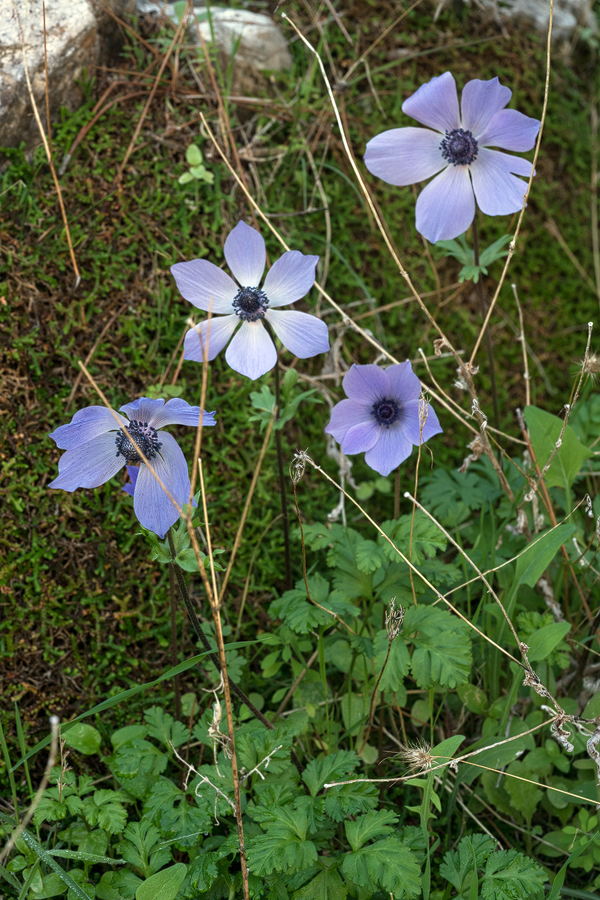
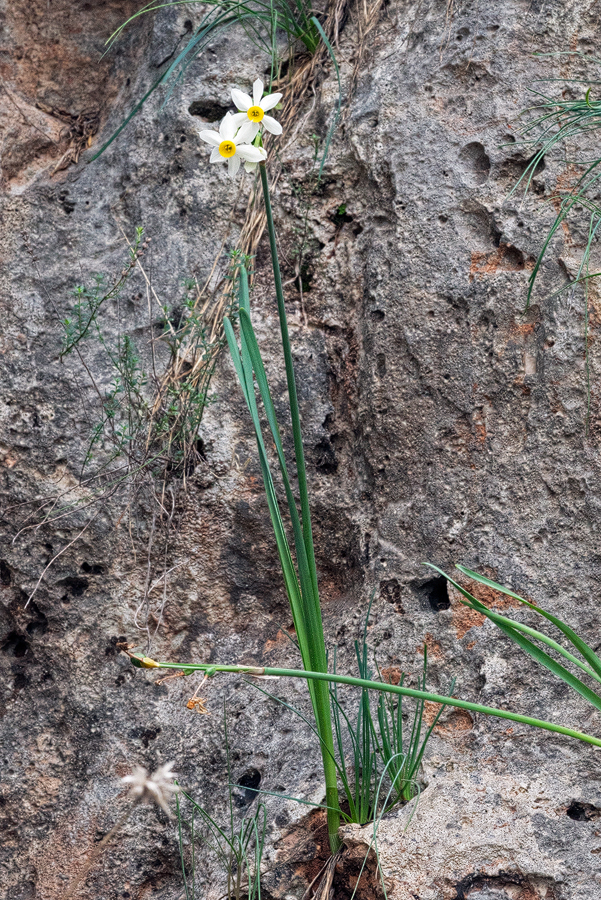
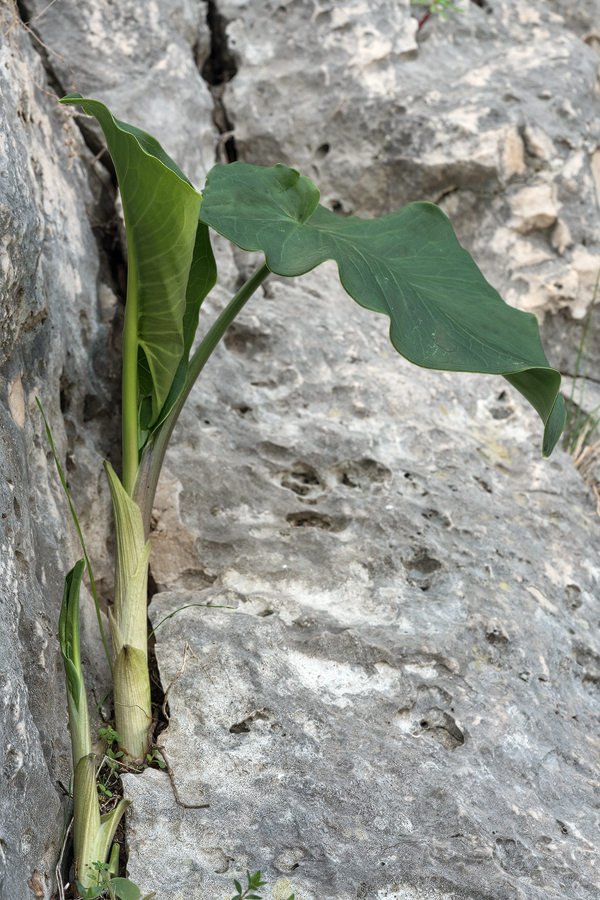
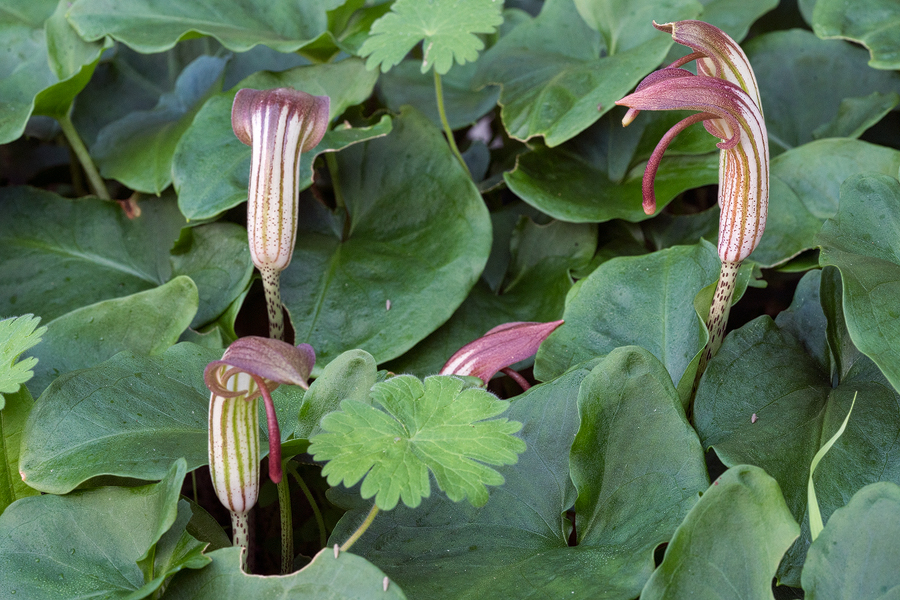
The current flora on this and other islands off the coast of Anatolia can properly be said to have been selected semi-naturally by goats. These ultimate vegetarians eat virtually everything. Even the gorse had been topiarised by their browsing. All that is left is the handful of plants too poisonous, or too inaccessible, even for a goat. Not that anyone would notice, if they developed an appetite for Daphne. In the days I spent exploring, the goats and I had the cliffs entirely to ourselves.
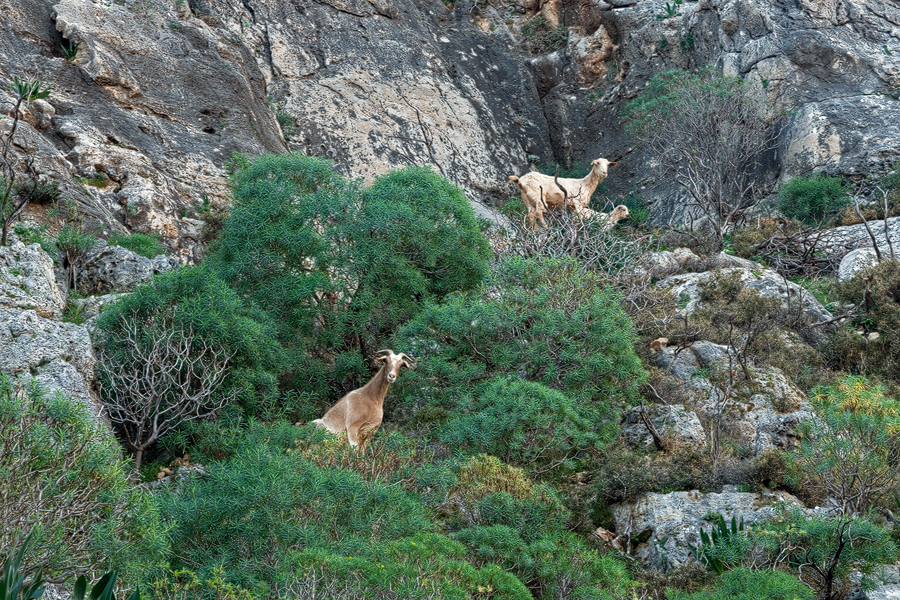
There are few paths on Kastellorizo and the island is heavily militarized, owing to the proximity of Turkey and the strategic importance that Greece attaches to this little speck of rock. So one feels rather uncomfortable creeping about in the scrub with a camera, a long lens and a pair of binoculars. This didn’t stop me of course.
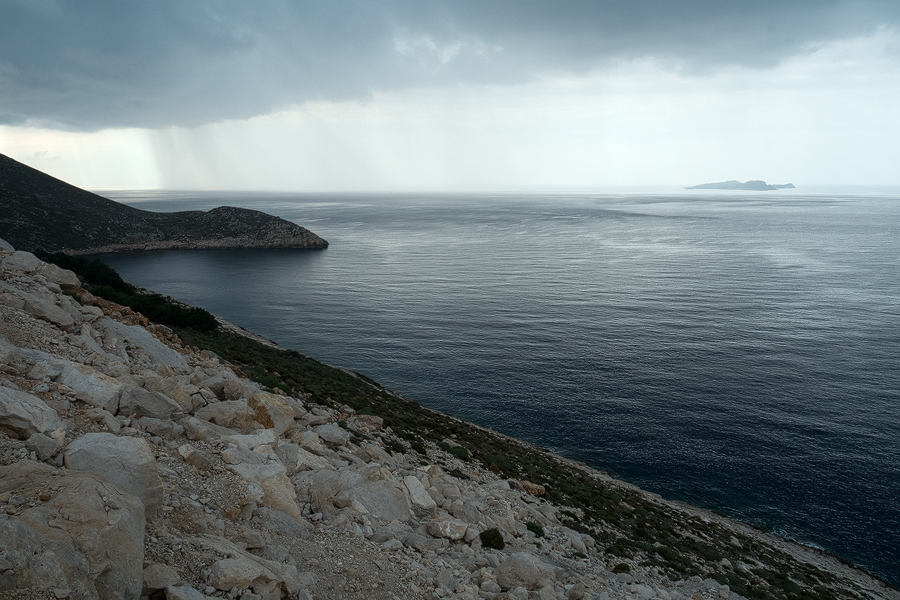
I wanted to get out to Cape Limenari, the north-west point of Kastellorizo, to see whether snowdrops grew on the sea cliffs there. There is no path to the cape, so I scrambled down a rocky slope, picking my way between the thorny shrubs. About half way down I noticed the first of several discarded lifejackets which, along with towels and various bits of clothing, had been abandoned or dropped, as newly arrived refugees made their way up the hill to the airport road. Down on the shore, larger concentrations of abandoned life-saving gear were dotted about, presumably where boats had made landfall.
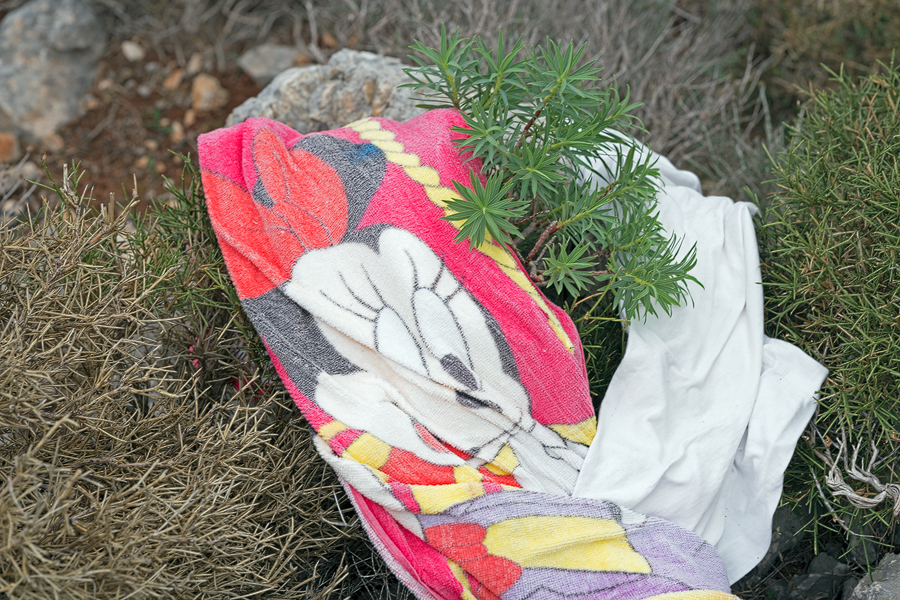
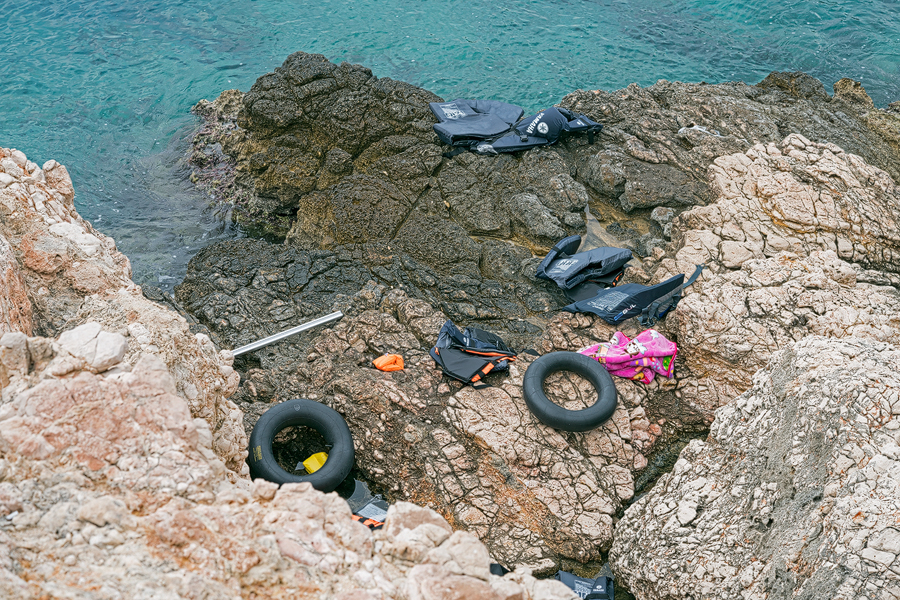
There were no snowdrops and so I panted up the opposite hillside to a military track, that makes a loop around the north of the island. Every few hundred metres was a camouflage-painted concrete and timber bunker, with a wide slot in the front affording a view of the sea between the island and Turkey. It had started to rain and I sheltered from downpours in several of the bunkers but there were no lookouts save me, and I saw only one soldier, on a motorbike, on my long walk. At the northern tip of the island is a small whitewashed church, Aghios Stephanos, which was deserted. It was mid afternoon and I could clearly hear the azan, issuing from the minarets of Kaş, across the narrow strait. The god of the Muslims may or may not be great, but he has excellent loudspeakers.
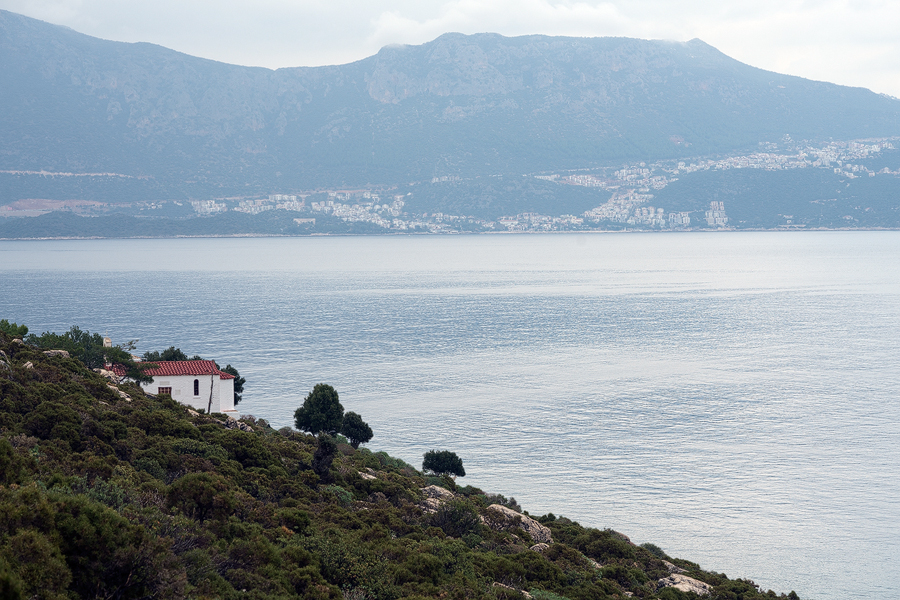
I sat in bed that evening, a couple of blankets pulled over me against the chill, drinking retsina and eating coarse, roughly cut slices of salami (you can enjoy these small pleasures, when no-one is watching), feeling slightly dispirited. Biogeography mocks transient human political borders. The same plants I’d admired a couple of weeks previously on Kekova also flourished on Kastellorizo, growing on cliffs formed of the same iron-stained, grey limestone. Relatives of the same goats ate the crap out of all the palatable plants on both islands, as they have doubtless been doing for millennia. And yet I’d taken a detour of 6,000km to cover the 20km distance between the two fragments of land, because one was in ‘Turkey’ and the other in ‘Greece’ and I hadn’t studied the map closely enough. The refugees feasting down at the harbour, had taken a shorter, more direct, but vastly more perilous journey between the two countries because the geopolitical entity they were fleeing, Syria, is tearing itself apart. The hell with nationalism, religion and their retarded cousin, superstition!
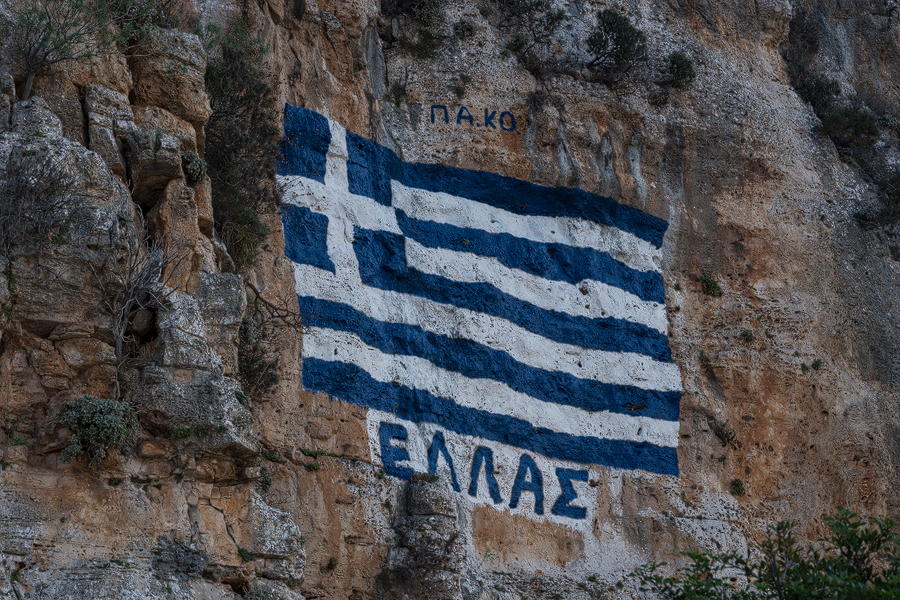
When it came time to leave Kastellorizo, I was glad. There’s something ineffably sad about the place, an impression reinforced by ‘for sale’ signs on many of the buildings and businesses. The island has exactly one taxi, which seems about the right number, given that it has only one two-mile-long road. The driver seemed pleased to have a customer and the customer was pleased to be heading to the airport and home.
